IIoT and Industry 4.0: Why Skanem India is investing in digitisation - The Noel D'Cunha Sunday Column
Vinod Vazhapulli, managing director at Skanem India sees clear business benefits of technology and wants to stay ahead of the curve while driving productivity and revenue levels. In this conversation with PrintWeek, Vazhapulli explains why data is an asset that can drive business
Read more ...
05 Sep 2021 | By Noel D'Cunha
At the start of 2020, what were the plans – anything new to renew focus and vigour?
2020 was the year we had strategised and put specific actions in place to ensure that our vision of a growth of 15% CAGR year-on-year commences. We had also planned to expand our product offerings in the labels as well as our machine business vertical. We are still pursuing the same in terms of our journey towards digitisation – IIoT and Industry 4.0.
At what point did you realise just how serious the Covid-19 situation was?
We kept a close watch on the situa-tion ever since we heard about the virus spreading out of the country of origin. It was followed by reports of the virus reaching India, then the nationwide lockdown, and the everincreasing number of cases on a daily basis. I guess somewhere around mid-March, we understood that this needs to be considered on a very serious note and has a real potential to be a business disruptor.
What was the effect on your business?
Quite honestly, it did influence our business during the period of end- March till early June 2020. Post that, we started our journey towards recovery. By the end of 2020 (our FY is January to December), we ensured that we are within our budget, both on top and bottom lines.

The Skanem India plant in Vasai
You said you were on a journey towards digitisation, IIoT and Industry 4.0. Can you elaborate?
There are four pillars that are fundamental to the Skanem Group, and we as Skanem India. The four pillars are – sustainability/wastage reduction, digitisation, business growth and employees’ welfare. At the start of 2020, our emphasis was on two pillars – digitisation and sustainability. Under the pillar of digitisation, we focused on two major projects for 2020 – Industrial Internet of Things (IIoT) and ERP. Mind you, it was initiated prior to the Covid-19 pandemic. And despite the challenges, we continued with the projects.
While it’s seen across the industries, one of the things I have observed in our industry is: not many of us are working on the digitisation aspect such as IIoT. It is basically connecting all your machines through a cloud server and recording the entire aspects of the machine run. For example, recording the stop times, job length, wastages, and so on, which happens during the operation. So, the entire operation, which used to be recorded manually, will now be connected through the sensors on the machines to the cloud servers where the data will be uploaded.
The server will send daily MIS information to selected leadership team members, which would be the factory managers, director operations, the CFO, for data analysis purposes using a business intelligence package. This data will connect to the ERP, a global platform, we are working on.
We are still working on the project and hope to complete it during 2022.

Skanem India has nine flexo printing presses across three factories in India
The second pillar would be sustainability, I guess…
Yes. I remember it was a question you asked in 2019 – plan on sustainability. At that time, we did not have concrete plans in place, but now, after two-and-a-half years, we, at Skanem India have a clear cut Strategy in place. We have indeed started working quite a lot with regard to sustainability because most of the major multinational customers that we cater to, each of them have set certain targets for their sustainability goals by 2025, and it would be highly recommended if their supply chain partners can contribute towards these initiatives.
So, we have charted out our plans to meet our suppliers' requirements in reducing our carbon footprint in specific areas. For example, we are looking towards working on implementing a solar power project in our plants. We can reduce the conventional power usage, usage of recyclable materials in our own primary packaging, going for other green options in raw material (RM), reduction in usage of fossil fuels (gas) in our operations and other activities.
Also, recycling of our own RM wastages through different sources, among others. These, plus few other initiatives that we are currently working on to make sure that we have our sustainability targets met up Group-wise and company-wise.
You spoke of IIoT implementation and what you hope to achieve. It's been over a year of its implementation now. Can you share what improvements have you seen? Has it really impacted profitability?
Let me give a shot at your second question first. I am a mechanical engineer and have spent more than 22 years of my professional life in different industries before joining Skanem. I was fortunate enough to start my career with the automobile industry, then moved to the pharma engineering industry, tooling industry, and textile engineering, prior to joining Skanem. So, through cross-industry experience, I have seen most of these industries taking advantage by aligning towards Industry 4.0. I was very clear that this will work in this industry as well.
Why?
Now, let me be very precise as to what it does? You know the equipment efficiency (OEE) sheet of the machines in your assembly floor is what determines the productivity and throughput of any company. That's the heart. So, when you pick an OEE sheet, you specifically look at what are the downtimes. There were times when lack of data or, better, lack of sanctity of the data that is presented, because of which the management was unable to come up with a proper strategy that would solve the challenges. Even if they did, it would not be highly effective or result-oriented, as the data given is purely manual, and it would have an element of ambiguity in it.
All I am saying is, if you don’t have the real numbers, you can never draw up a good strategy.
Can you give an example?
Say, if you want to reduce the lowload problem, the first thing you need to know is: the reason for the lowload situation – is it because you don’t have enough raw material, an operator, or a machine downtime? You need to know the actual reason, and if you don't know how much of that percentage is getting affected on the total shift time, you will never be able to prioritise the first step that you need to do. With the IIoT, the sensors automatically start capturing the data.
You know when the machine has stopped and what is the reason for its stoppage. It shares that information with the MIS, which is on the cloud-based server, and you get the data in real-time. You don’t have to ask the operator, or the supervisor or even the plant head to give me an update on key issues. I can go online and find out what exactly is going around with the machines. I keep the complete details and then meet my operations head or even the plant head. Let’s say we have nine flexo machines and one digital press, and I exactly know what the throughput of these machines is.
I know what went wrong or what went right on certain specific machines, and what are the areas of improvement that I can have. You must understand the ground realities for continuous improvement... True. When my erstwhile operations head left a couple of years back, I put my hands into operation for around eight months till my new operations head came in. The reason I wanted to spend some time on the shopfloor was I wanted to understand the real throughput time. So, without knowing the actual cycle time of the machine, you cannot put pressure on the production team.
You need to know what the stop time or the changeover time is, and the cleaning time, without which you cannot expect improvement. Once you get to understand these things, and I get the real-time data, I can cross-check and have an effective discussion with my team, understand what plans need to be in, and how effective would that be.
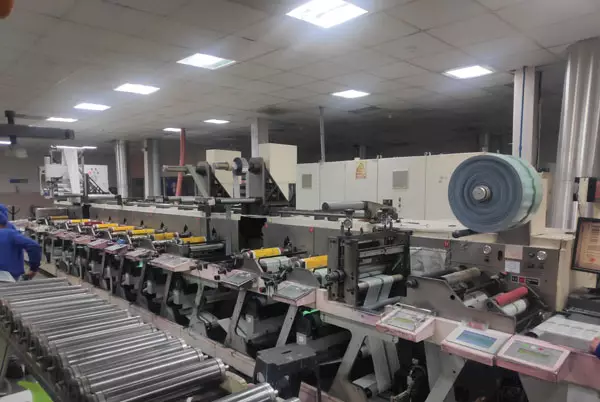
Skanem's Gallus, Bobst, Nilpeter flexo presses, with minor modifications, would be ready for IIoT
Could you give an example of such a plan?
I can give an example of a specific project of wastage reduction that we had undertaken in the latter part of 2019 and the whole of 2020. We have our presses, which, on average, are 10-14 years old. We haven’t invested in a new flexo machine for quite some time now. But for me, one thing is very clear – you must milk the cow to its maximum, rather than put another asset on the job for the same purpose. Until 2019, the proportion of waste was around 23%.
Now when we talk about waste, it can be attributed to factors such as – short runs, lack of efficiency, lack of knowledge of the operator, and trial and error while set-ups. But the point is, there was a tremendous amount of wastage that we could see as against our global average of 12% to 13%. We looked at the OEE sheets, and we put a define, measure, analyse, improve and control (DMAIC) plan. With the data available with us, we just took out the guesswork. And believe me, today, after one-and-ahalf years of hard work, our average waste is down to 16%, and that has been because of meticulous planning, owing to the clear data that was available to us right from the start.
The intelligent running of operations is summed up as Industry 4.0. I am glad to announce that during the Skanem Group annual conference held in March 2021, the India operation was selected as a role model for how to effectively reduce waste with a clear-cut plan.
So, in terms of your machines, are they IIoT-ready?
The first thing is the flexo machines that we have are from Gallus, Bobst (Gideu), and Nilpeter, and a HP Indigo. These machines, with minor modifications, would be ready for IIoT.
How did you go about undertaking this plan?
We started off by identifying the right consultant, or the partners who could work with us. We had three choices and picked up the best one for us – Microsoft Azure, which is a cloud-based server. We gave ourselves six months’ time – from August 2020 to January 2021 – to work on the project, analyse and give us clarity on whether the existing machines with minor modifications would be good for implementing the IIoT project across the centres. And I'm happy to say that it is good to go with minor modifications, which we have considered in the present budget.
There’s always a hesitancy among the employees in accepting ways that’s different from the routine...
It depends on how you take care of your employees. So, leadership for me is always about making sure that the employees understand – why we are doing this and what is in it for them. The first thing we did was a joint session with employees of all our three plants and answered this question: what is in it for them, which included appreciation and benefits. The more effective and efficient they are, the more will be the incentives, be it productivity or lowering wastages. The more effectively the employees start measuring it, the more we see the throughput coming in every month. Along with their sales, we make sure the incentives are also added. So, that’s the best tangible results they are getting, right?
Coming back to IIoT. What kind of investment has Skanem made?
There are two ways to look at IIoT. One is the actual hardware and software part, which is the sensors, the data generation, and the cloud server platform. The other is the business intelligence package. If you already have the business intelligence package, one is looking at close to Rs 60- 80 lakhs, nearly a crore. So, by investing around Rs 1-crore, if I can effectively increase our ethical, progressive, intelligent consumer (EPIC) by around 3% to 5%, I will go on and invest because I get the data that provides me a direction or understanding of whether the job will be profitable or not. I am very clear about that.
Does having global backing help?
Not in the case of Skanem India, and I will tell you why. The first thing I was told by my Board when I took over was,“Skanem India is a standalone unit and has to be financially independent and strong.” We already had a good amount of external credit borrowings (ECB) from our corporate, which we need to give back to them because they have invested a certain amount of money in the India venture, with a clear agenda – making Skanem India profitable.
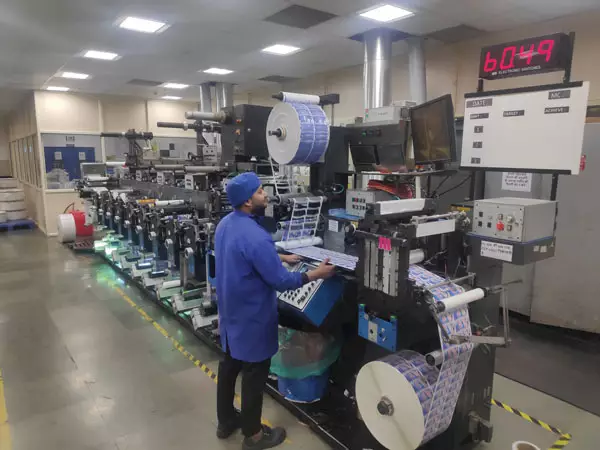
Skanem's waste is down to 16%, and that has been because of meticulous planning
Do you mean no support for scalability?
Yes. Skanem generates revenue of Rs 140-crore. We need to make a profit and live off it. That was the message. So, what did you do? My first task was to ensure that we strengthen our cash balance because cash is always the key. We liquidated our inventory at all levels, made sure that everything that was manufactured was billed, reduced our wastages and costs that were not essential or vital for us. And more importantly, we focused on overdue receivables. That was one area where we were heavily bleeding.
And from 2019 to 2021, our cash position reached healthy levels, and we are in a much better situation on that front. Now having said this, every time a budget for Capex is prepared, and it includes digitisation and ERP, we must generate cash for ourselves. There are two ways to do it. One does it from their own operations, and the second goes to the bankers. So, the moment we strengthened our cash position, the bankers were more than happy to come and share the burden.
What did you do?
My agenda was to take around 30% to 40% of our cash balance and use the bank loan to finance our projects. So, I just want to emphasise that we are completely independent. We are not looking to our corporate headquarters for any kind of funding or backing. So, whatever we are planning on digitisation, investing in a new machine, or acquiring a new company, it is purely based on our strong cash positions.
For India, it’s Industry or Automation 2.5 and not 4.0 or 5.0. What’s your take?
I am completely of the view that Industry 4.0 is the right way to go. Many of the industries are always in chaos, take for example, the consumables industry, and I am not even looking at the printing industry. Why? Because your bottom lines are so thin that a penny here or there, and you are staring at a loss.
The reason for this is that the middle lines are not measured. The focus is more on the top line or the bottom line. I think, till the time you don’t know what your cost of goods manufacturing (COGM) is, you cannot control anything. And your COGM is completely governed by your cost of manufacturing (COM). Now, what is COM? It is the money that you pump in your production or manufacturing (direct/indirect production cost and overheads).
Today, the biggest problem in most of the unorganised segments of the manufacturing industry is that we don’t know how much money we are making. We go left, right and centre, into a price war the moment our customers ask for the price reduction, or we get into bidding, just to retain the business without knowing how it is pinching our bottom line. If we know what our COGM is, we will know what our COGS is and if we know this, then we clearly do know what our margins are. This proves that only relevant data will tell where you will make money and how much. I gave you an example, where we could bring our wastages down by 7% in 18 months, and in a label industry, that is something.
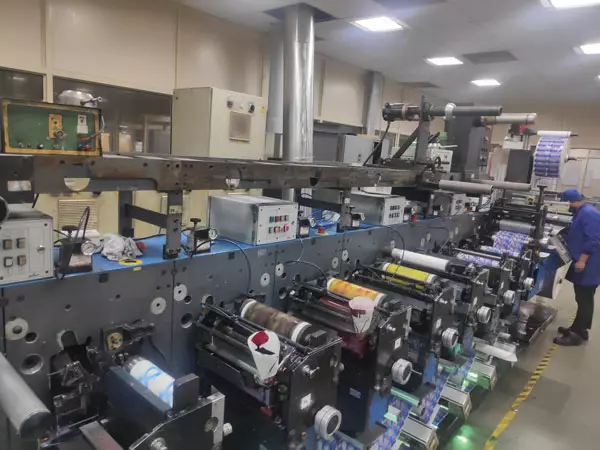
During the lockdown, Skanem shifted an eight-colour Gallus flexo press from the Mumbai plant to the Baddi plant
Did the pandemic present Skanem India with any opportunity that would enable its operations to keep running?
During the lockdown, we made a slight rearrangement. We shifted an eight-colour Gallus flexo press from the Mumbai plant to the Baddi plant. As you may know, we had five flexo machines in the Mumbai plant – three Gidue and two Gallus. According to our data, one of the Gallus flexo presses was underutilised. The other plants – Baddi had two flexo presses and Guwahati, one. I knew I had an underutilised asset lying in Mumbai, and the second was the business continuity process (BCP).
Why did you transfer the press to Baddi?
Our Baddi plant is large and needed to be bolstered. The other reason was cost. In Mumbai, the power utility costs are higher, other overheads are higher, but in Baddi, it is lower. So, that was always going to augment our bottom line. Further, we went ahead with this plan during the pandemic because we could scale up our production in Baddi. What we did extra at Baddi is that we added an online AVT system to our slitting units and reduced the bottlenecks. We modified the plant to enhance our capacity to fulfil the requirements for the North part of India, which gave a lot of confidence to our customer base in the Northern belt.
How has the order picture been during the pandemic?
We observed that the build-up that happened post lockdown saw its own ups and downs during the year. We’ve got two separate business verticals – one is the machines business, and the other is labels. Though the labels business is the big brother, machines contribute around 10% to 15% of our revenue. I would say, in labels, we achieved 92% of our 2020-2021 budget (sales). Of course, we had a severe problem with the machines business because all the non-essential services were completely stopped because of the lockdown.
So, we faltered a little bit, but as Skanem India, we achieved around 85% of our targets once things started opening up after the 2020 lockdown. Having said that, we do see a consistent pattern of orders that are being received by us, even as we speak. When we spoke to Skanem in 2019, you were at a stage where you had found your footing in the market, and planned to leap to the next level – grow at a CAGR of close to 15% on a year-on-year basis. Pandemic has been a blip, but having said that, what kind of growth are you envisioning? How do you plan to achieve that? You will agree that strategy is a longterm plan. The vision cannot change due to a blip owing to any reason.
We just need to adapt and find a better way to achieve the vision. So, the focus remains the same – achieve steady growth in CAGR of 15% yearon- year basis and touch the Rs 250- crore mark. And to achieve this, we focus on our current brand owners, tap into newer markets (domestic and exports) with a diverse range of product offerings, increase our overall brand presence through various marketing approaches and are also looking for clear market leadership through possible acquisitions during the coming times. I would reiterate that we are here for the long haul and market leadership. And being the only brand in India with two separate verticals catering to your product packaging needs, Skanem India is your one-stop solution for all your product decoration requirements.

2020-21, Skanem India achieved 92% of its sales target
I was looking at an interactive McKinsey for Kids: (Food) waste not, want not, and among other things, the message it conveyed to the kids was: look at the information on the label of the food product. So, in a way labels, are not just for decoration, it’s much more now?
Absolutely. Two things have happened. The first is, people have started looking at labels very seriously – The ‘Best by’ is about food’s quality and ‘Use by’ is about food safety. Second, there’s awareness among the 30+ population about what to eat. So, they are looking at the calorie count, fat content, protein, and so on. This is now called intelligent eating or intelligent consumption, making the person an intelligent consumer.
So, label today is not just a decorative product, but it is a window of information on what that product is. You remove the label, and you have – a packaging with just the product in it. For me, labels today are a technological tool.
Skanem smart labels – is that what the technological tool is?
With Skanem smart labels, you can connect with your customers in a much better way. From engaging your customers to tracking and tracing products to anti-counterfeiting and creating customer loyalty programmes – Skanem smart labels can do it all. It would not only give our brand owners an edge over their competitors, but also enable them to understand the needs of their customers better on their own. We intend to partner with our customers to help them reduce their marketing spend by using smart labels, as this opens the window for them to understand their final customer better and up close. It’s the age of digitisation, and this is one of the many steps into the digital world.
Which segment do you think will see significant growth?
The ‘ready to eat’ or the ‘heat and eat’ segment in India will grow significantly during the coming years. That's one of the reasons, we are also promoting our linerless labels, which are already sold by us in Europe and the Far East.
It’s true – there is much doom and gloom around, but sight shouldn’t be lost of the fact that the sky hasn’t fallen, the world hasn’t ended, and society will surely get through the coronavirus outbreak. But it’s going to take – and this is an understatement – some managing and time. What is Skanem’s mantra going to be?
Even when the pandemic subsides, it will leave behind a changed economic landscape for manufacturers and their customers. There are going to be changes which we need to adapt to. At Skanem India our mantra would be to embrace every change, adopt all the technological advances into our daily routine that comes our way, all while remaining focussed on taking care of our 360-degree stakeholders, thereby becoming the market leaders in providing product decoration solutions in India.
Manging Covid-19 pandemic and lockdown
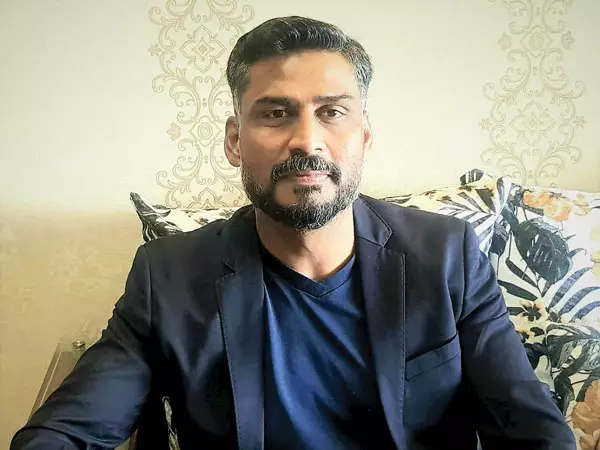
Vinod Vazhapulli, managing director at Skanem India
What were the key measures you took to cope with such an unprecedented situation?
Our very first step was to ensure the safety of our employees. In such unprecedented situations, it is the internal stakeholders that you need to focus on more. Ensuring they feel secure and keeping their morale high is the key factor. Without going into details, I would like to state that all that needed to be done was in place to ensure the needs of our employees and their families were taken care of at all times by our management and HR team, across all our four sites in India.
Simultaneously, we engaged ourselves to get our facilities sanitised and compliant with all the guidelines laid down by the Government of India and Maharashtra.
Covid-19 was a difficult time for the employees…
During the Covid times, we took care of our employees, especially the workmen. We don’t look at our employees as a liability; we look at them as our assets. So, we made sure that not one of our employees were fired, and that the salaries were paid before 28 or 29 of every month, and in full. We made sure that all our employees were covered by extra insurance to the tune of Rs two lakhs for every one of our employees, specifically for Covid-19 infection. And believe me, almost 45-50 of our employees were affected. And they claimed their insurance. So, none of our employees’ pockets got pinched.
How did you manage it – man, machine and material?
We, at Skanem worldwide, are tied up with Microsoft, and hence the tools were provided to ensure connectivity with our team internally and external stakeholders. MS Teams was extensively used during this period. Usage of MS Power BI and Power Apps gave us the leisure of staying updated with the daily order booking, sales pipeline management, throughput measurement, overall equipment efficiency mapping, PPC, supply chain management, billing, dispatches, and logistics. Looking at the advantages, we are now contemplating to use these tools more aggressively to maximise the benefits associated with it.


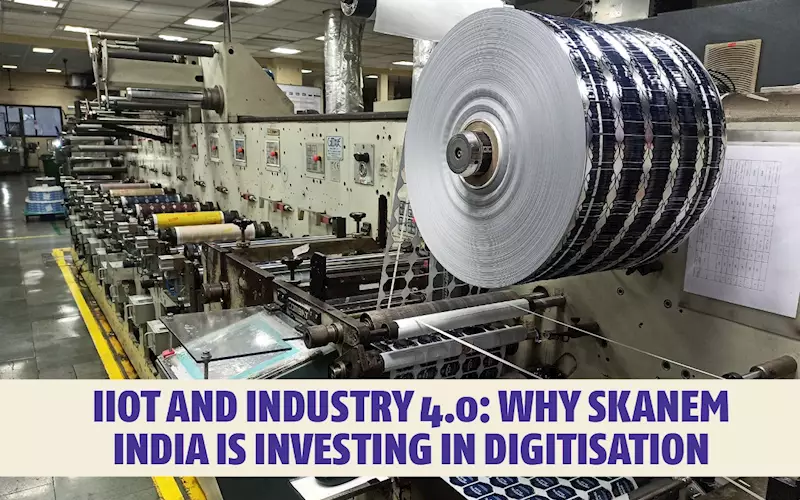











 See All
See All